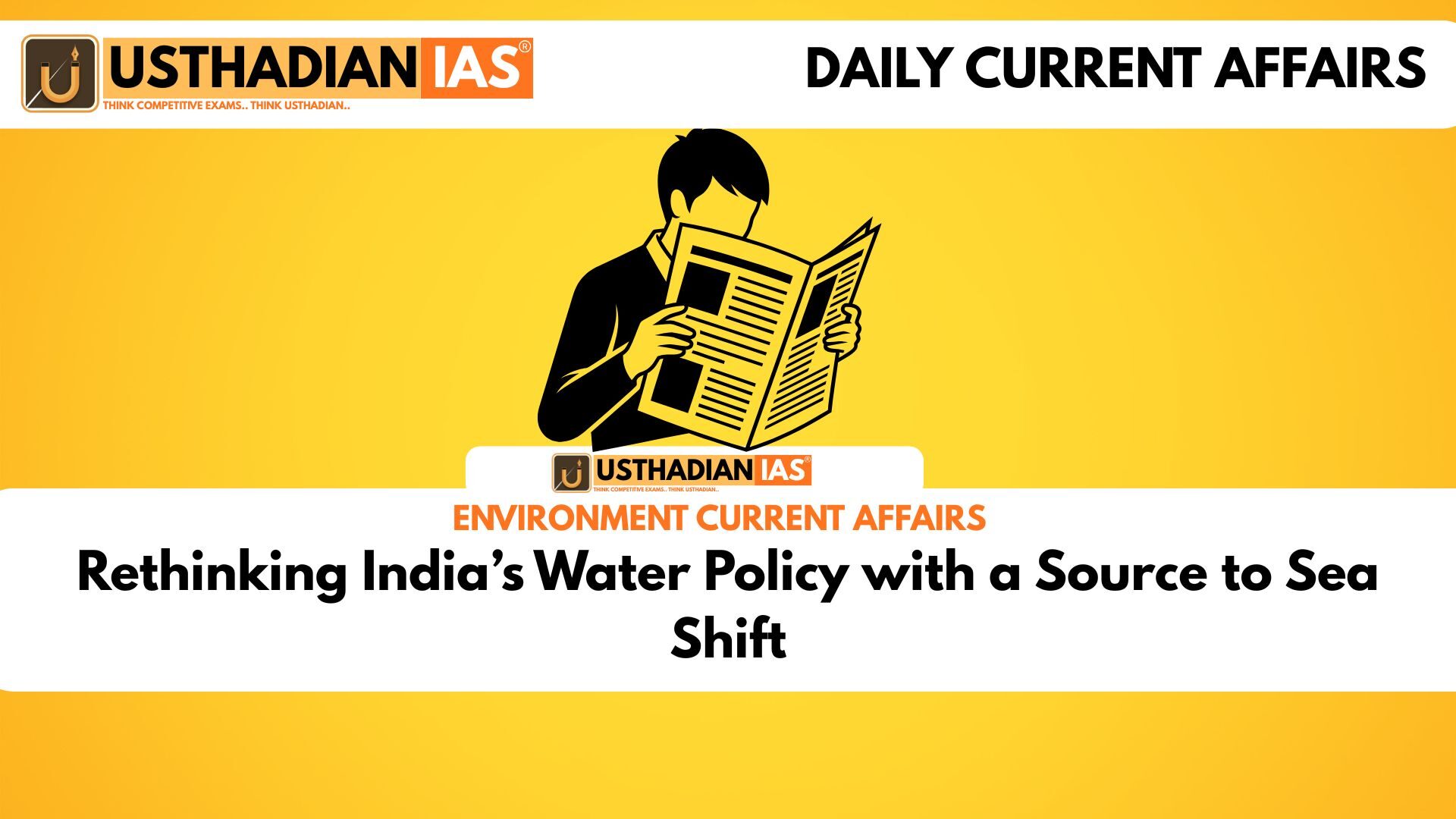Rising crisis in India’s water system
Rethinking India’s Water Policy with a Source to Sea Shift: India is standing at a crossroads when it comes to water. Pollution, climate change, and overlapping jurisdictions are stretching the system to its breaking point. From the glaciers in the Himalayas to the coasts of Tamil Nadu, water travels through a tangled network. But our policies treat each part separately. This is where the Source to Sea (S2S) approach becomes vital. It views water as a continuous flow — from mountains, through rivers and aquifers, all the way to the ocean.
Why this approach matters now?
In 2025, the global focus has shifted. World Water Day turned the spotlight on glaciers, while the UN Decade of Ocean Science called attention to our coastlines. These moments are more than symbolic. Glacier melt in places like the Himalayas is already affecting downstream rivers. Rising sea levels and coastal erosion are threatening lives and biodiversity. The S2S approach acts like a bridge — connecting upstream and downstream, land and sea.
Goals of the S2S model
At its heart, the Source to Sea model promotes joined-up thinking. It encourages stakeholders to stop working in silos. Instead, they must cooperate — whether it’s a local panchayat managing a stream or the national government regulating dam projects. The approach also ensures freshwater reaches the oceans, helping marine ecosystems stay balanced. And importantly, it strengthens climate resilience by treating the entire system as one interconnected web.
Global support and movement
The idea isn’t new. Back in 2012, the Manila Declaration brought attention to marine pollution coming from land. Then, the Stockholm International Water Institute (SIWI) set up a platform to push the idea forward. In 2025, the International Union for Conservation of Nature (IUCN) took over its management. The Source to Sea concept also ties into Sustainable Development Goals, especially SDG 6.5 (Integrated Water Resources Management) and SDG 14.1 (Reduce marine pollution).
India’s unique water stress
The NITI Aayog report of 2018 warned that 600 million Indians could face water stress. It’s not just surface water that’s in trouble. Groundwater overuse is rampant — states like Punjab and Haryana extract more water than they recharge. River pollution is another red flag. According to CPCB, there were 311 polluted river stretches by 2022.
Complex governance gaps
India’s water system is like a layered cake. There are local water bodies, state-level rivers, national rivers, and finally, international river basins like the Ganga. But these are all managed separately. There is a desperate need for nested governance — one where policies align from the village level to global forums.
Encouraging signs and initiatives
Delhi has already started using nutrient management techniques aligned with the S2S method. A new Future S2S Programme is also being planned to study settlements in the Indo-Gangetic Basin. These pilot steps are promising and show that India is waking up to the importance of this model.
Why the shift matters?
Adopting the S2S model can solve a long-standing problem — fragmentation in water policy. It brings science, planning, and action under one roof. This can improve everything from farming practices to safe drinking water and even help in managing disasters like floods. For a country as large and diverse as India, this shift might be the only way forward.
Static Usthadian Current Affairs Table
| Topic | Key Facts |
| World Water Day 2025 | Focused on Glacier Preservation |
| UN Decade of Ocean Science | 2021–2030, now at halfway point |
| Source to Sea Framework | Promotes holistic water governance |
| CPCB 2022 Report | Identified 311 polluted river stretches |
| Groundwater Use in India | 60.5% of extractable water used; Punjab & Haryana over 100% |
| NITI Aayog 2018 Warning | Water stress could hit 600 million, with 6% potential GDP loss |
| Manila Declaration 2012 | Addressed marine pollution from land-based sources |
| IUCN and SIWI | Managing global S2S water governance platforms |
| Indo-Gangetic Basin Focus | Proposed Future S2S Programme for Indian settlements |
| SDG Alignment | Supports SDG 6.5 and SDG 14.1 |








